Sculptural cells: Louise Bourgeois' emotive works on show at Moscow's Garage
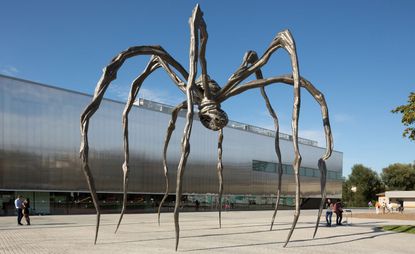
'The subject of pain is the business I am in,' said Louise Bourgeois, the late French-American artist whose 70-year-career was driven primarily by profound anguish, anxiety, and fear. In her final decades, these feelings manifested themselves in the form of cells, sculptural compositions semi-enclosed by walls, which for her meant both a retreat from the outside world and the confines of her mental prison.
Dozens of these almost-architectural pieces are now on view now at Moscow Garage Museum of Contemporary Art’s 'Louise Bourgeois. Structures of Existence: The Cells,' alongside the early sculptures, paintings, and drawings that foreshadow this later body of work.
Additionally, the iconic and ominous nine-metre-tall bronze spider Maman greets visitors at the square in front of the museum, and the never-before-presented monumental mirror Has the day invaded the night or has the night invaded the day? will confront them as they enter the atrium.
The cells, comprising found and sculpted objects – meat grinders, mesh cages, glass orbs and stairs to nowhere – revisit recurring themes: the mirror as a symbol of both deflection and self-awareness, for example, or the spiral, which for Bourgeois represented control. Throughout, her pain is palpable: a headless wooden mannequin arches its back in agony. Elsewhere, the blade of a paper cutter is poised to fall on a small sculpture of a person.
In laying these raw emotions bare, however, the artist found comfort. 'Bourgeois always said that she made work for herself,' says Garage chief curator Kate Fowle, emphasising the freedom and autonomy inherent in creating these miniature worlds. Bourgeois expressed her need to create art explicitly in Cell I, in which she stitched a message onto the bedsheets: 'Art is the Guarantee of Sanity.'
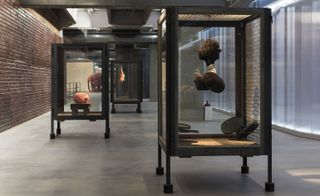
The late French-American artist's 70-year-career was driven primarily by profound anguish, anxiety, and fear

Throughout, her pain is palpable: a headless wooden mannequin arches its back in agony. Elsewhere, the blade of a paper cutter is poised to fall on a small sculpture of a person

The cells, comprising found and sculpted objects – meat grinders, mesh cages, glass orbs, and stairs to nowhere – revisit recurring themes...
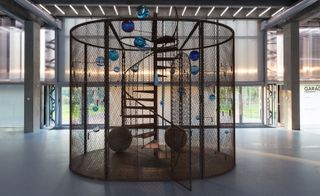
... the mirror as a symbol of both deflection and self-awareness, for example, or the spiral, which for Bourgeois represented control. Pictured: Cell (The Last Climb), 2008
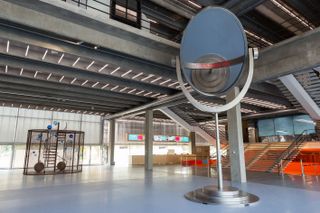
'Bourgeois always said that she made work for herself,' says Garage chief curator Kate Fowle, emphasising the freedom and autonomy inherent in creating these miniature worlds
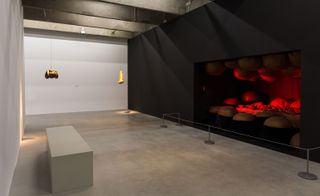
In laying these raw emotions bare, however, the artist found comfort
INFORMATION
'Louise Bourgeois. Structures of Existence: The Cells' is on view until 7 February
Photography: Egor Slizyak. Courtesy Garage Museum of Contemporary Art
ADDRESS
Moscow Garage Museum of Contemporary Art
9/32 Krimsky Val st
119049, Moscow
Wallpaper* Newsletter
Receive our daily digest of inspiration, escapism and design stories from around the world direct to your inbox
-
 Riva El-Iseo is the legendary boat builder’s first fully-electric motor yacht
Riva El-Iseo is the legendary boat builder’s first fully-electric motor yachtThe Riva El-Iseo electric speedboat blends classic Italian lines with a silent, powerful and zero-emission powertrain
By Jonathan Bell Published
-
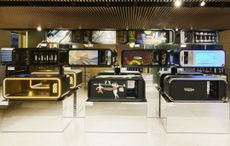 Technogym Home Bench 40 ways: designers interpret the home exercise classic
Technogym Home Bench 40 ways: designers interpret the home exercise classicTechnogym marks its 40 anniversary with 40 special editions of its Home Bench created in collaboration with international creatives
By Rosa Bertoli Published
-
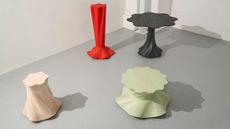 AHEC presents new works in American maple as part of the Wallpaper* Class of ’24
AHEC presents new works in American maple as part of the Wallpaper* Class of ’24The American Hardwood Export Council takes part in the Wallpaper* Class of ’24 exhibition at Triennale Milano during Salone del Mobile (16-21 April 2024), presenting new pieces by Parti and Giles Tettey Nartey in American hard maple
By Rosa Bertoli Published
-
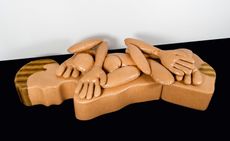 Don’t miss: ‘The Mother & The Weaver’ dissects the complexity of motherhood
Don’t miss: ‘The Mother & The Weaver’ dissects the complexity of motherhood‘The Mother & The Weaver’ at the Foundling Museum, London, looks at the complex role of the mother in art from the Ursula Hauser Collection
By Hannah Silver Published
-
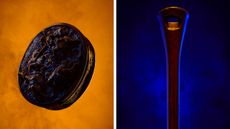 Royal College of Physicians Museum presents its archives in a glowing new light
Royal College of Physicians Museum presents its archives in a glowing new lightLondon photography exhibition ‘Unfamiliar’, at the Royal College of Physicians Museum (23 January – 28 July 2023), presents clinical tools as you’ve never seen them before
By Martha Elliott Published
-
 Museum of Sex to open Miami outpost in spring 2023
Museum of Sex to open Miami outpost in spring 2023The Museum of Sex will expand with a new Miami outpost in spring 2023, housed in a former warehouse reimagined by Snøhetta and inaugurated with an exhibition by Hajime Sorayama
By Harriet Lloyd-Smith Published
-
 Jenny Holzer curates Louise Bourgeois: ‘She was infinite’
Jenny Holzer curates Louise Bourgeois: ‘She was infinite’The inimitable work of Louise Bourgeois is seen through the eyes of Jenny Holzer in this potent meeting of minds at Kunstmuseum Basel
By Amah-Rose Abrams Published
-
 ‘A Show About Nothing’: group exhibition in Hangzhou celebrates emptiness
‘A Show About Nothing’: group exhibition in Hangzhou celebrates emptinessThe inaugural exhibition at new Hangzhou cultural centre By Art Matters explores ‘nothingness’ through 30 local and international artists, including Maurizio Cattelan, Ghislaine Leung, Hiroshi Sugimoto, Liu Guoqiang and Yoko Ono
By Yoko Choy Last updated
-
 Three days in Doha: art, sport, desert, heat
Three days in Doha: art, sport, desert, heatIn our three-day Doha diary, we record the fruits of Qatar’s cultural transformation, which involved Jeff Koons, a glass palace of books, and a desert sunset on Richard Serra
By Harriet Lloyd-Smith Last updated
-
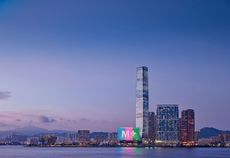 Hong Kong’s M+ Museum to open with six thematic shows
Hong Kong’s M+ Museum to open with six thematic showsAsia’s first global museum of contemporary visual culture will open on 12 November in Hong Kong’s West Kowloon Cultural District, with six themed shows spanning art, design and architecture
By Harriet Lloyd-Smith Last updated
-
 Maurizio Cattelan invites the who’s who of culture to read bedtime stories
Maurizio Cattelan invites the who’s who of culture to read bedtime storiesThe subversive Italian artist has recruited the likes of Iggy Pop, Takashi Murakami and Joan Jonas to read bedtime stories in a new digital project for the New Museum
By Pei-Ru Keh Last updated